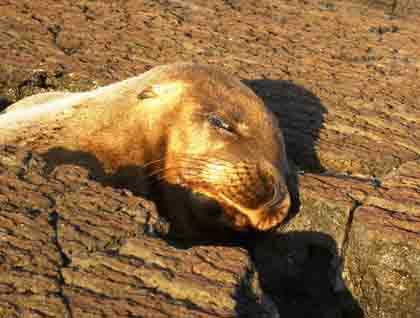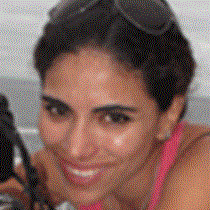Santiago Island was a common stopping place for Galapagos’ visitors for centuries: buccaneers, pirates and whalers found resources to use during their journeys through the Pacific Ocean. Later the first Ecuadorian settlers found a salt mine on the island in which they worked of decades. Charles Darwin spent most of his travel time in the Galapagos on Santiago Island. Of course, the effects of human presence affected the island. But today we are proud to consider Santiago one of the iconic islands of conservation, as it has been a key part in the restoration programs of the Galapagos. And today we enjoyed an island that, little by little, with a lot of work, is coming back to a fully recovered ecosystem.
This morning we started the day very early, disembarking to visit Espumilla Beach. The cycle of life is cruel sometimes, we found some hatched turtles fighting their way to the sea… but none of them could make it as Frigate birds use this chance to feed! We observed how frigates got them all with their fast movements!
We also found the top land predator of the islands: The Galapagos Hawk! During the walk the scenery was beautiful from the top of the hill.
After breakfast we enjoyed of Buccaneer cove landscape with high cliffs and tuff. Snorkeling was a highlight as well, and many enjoyed of the glass bottom boat. Water temperature was perfect and the visibility condition couldn’t be better!
In the afternoon we enjoyed a beautiful black beach, though we had to share with several sea lions. The juvenile pups didn’t mind playing around all of us, even interacting with our children! Our younger explorers had the time of their life!
The walk along the shores of Puerto Egas was a peaceful hike. Along the lava tubes and tuff formations, iguanas, shore birds and Sally light-footed crabs decorated the beautiful landscape with color and life. Sea lions and Fur seals enjoyed of the last light of the day by laying down in the most amazing positions over black lava! After this walk we all felt inspired by nature and its wonders. I will leave you with our guest Leslie Wolkowitz’s words: “Creatures of the land and creatures of the sea; in the Galapagos they are free to just be.”







